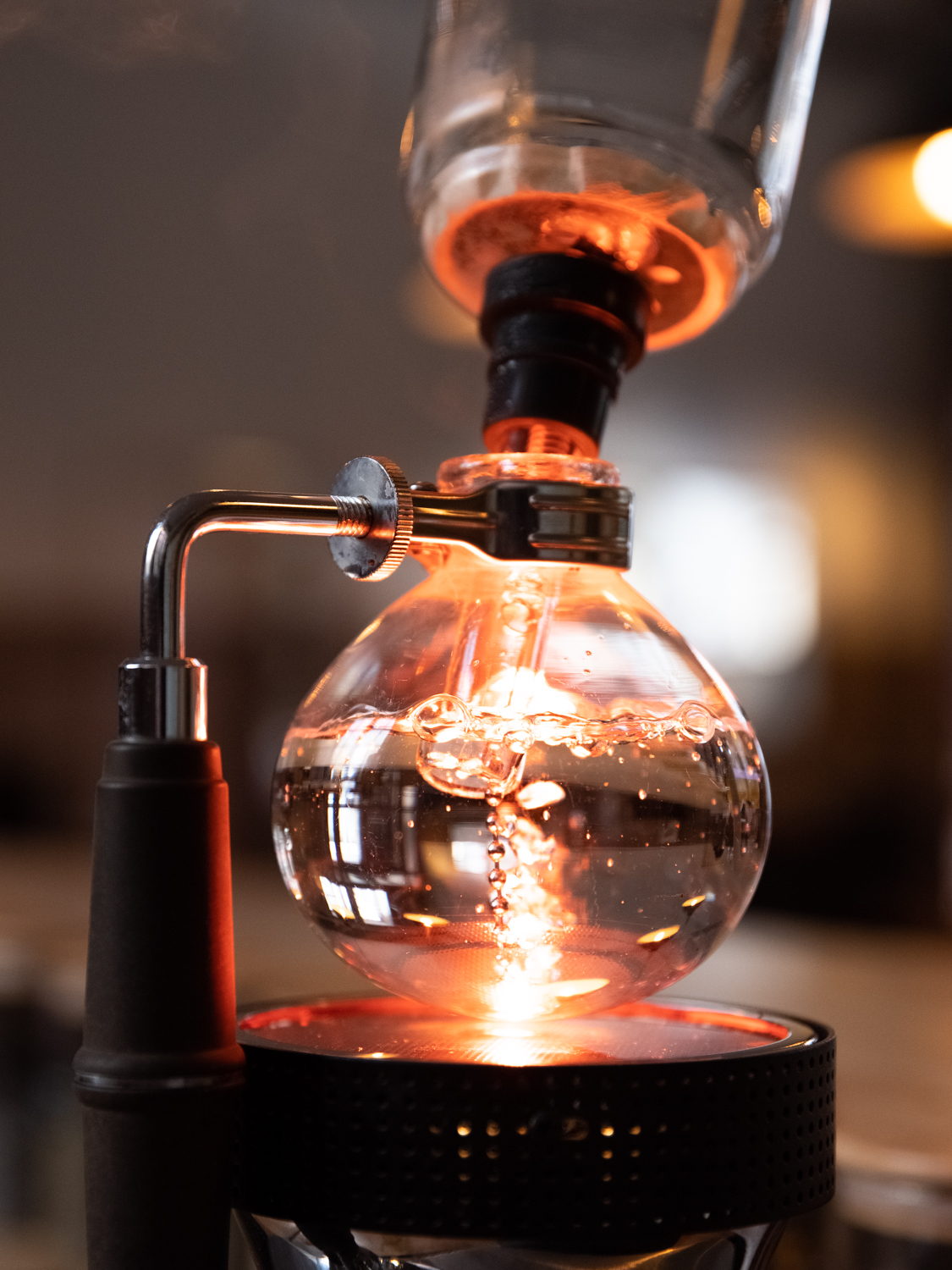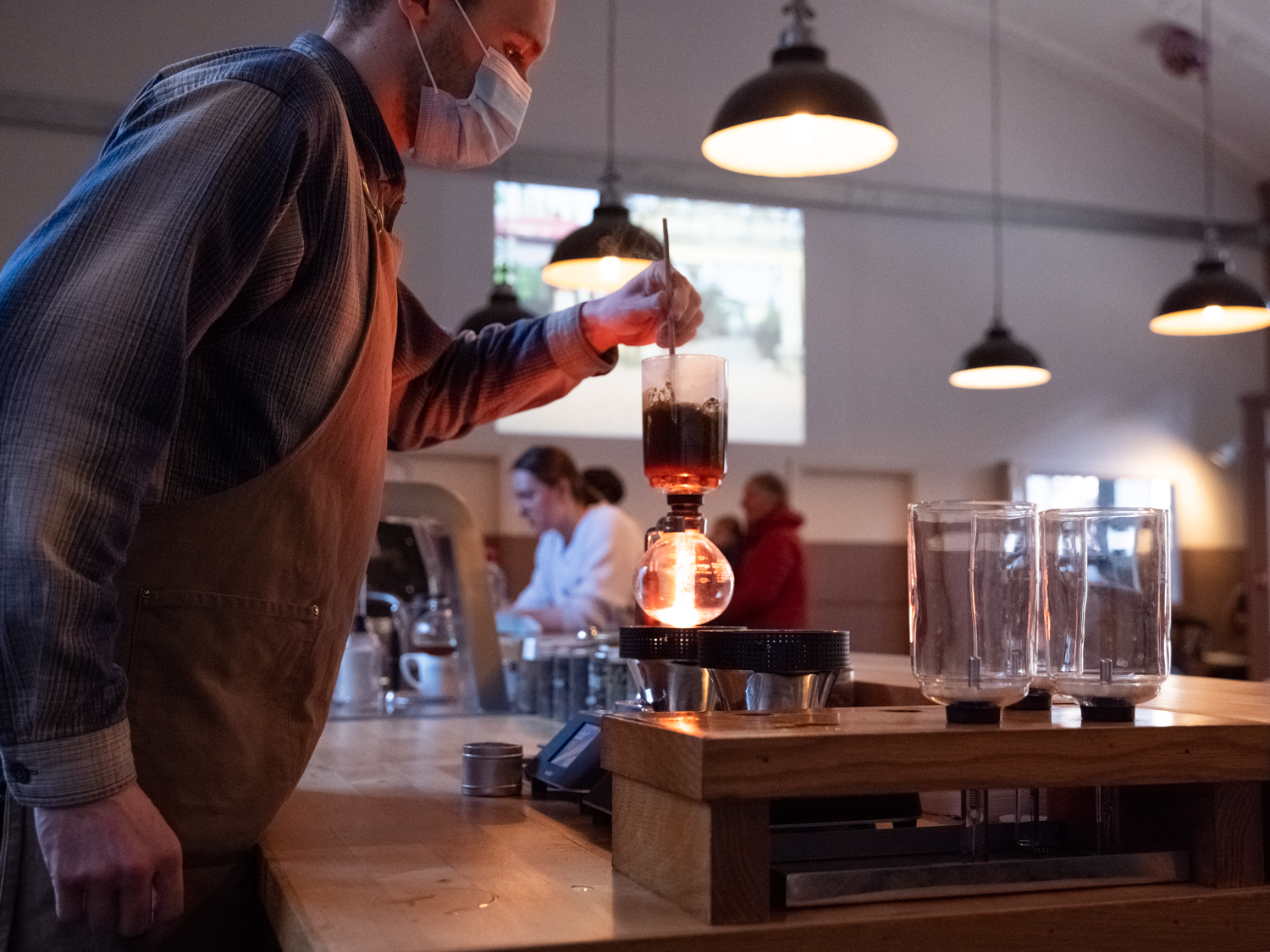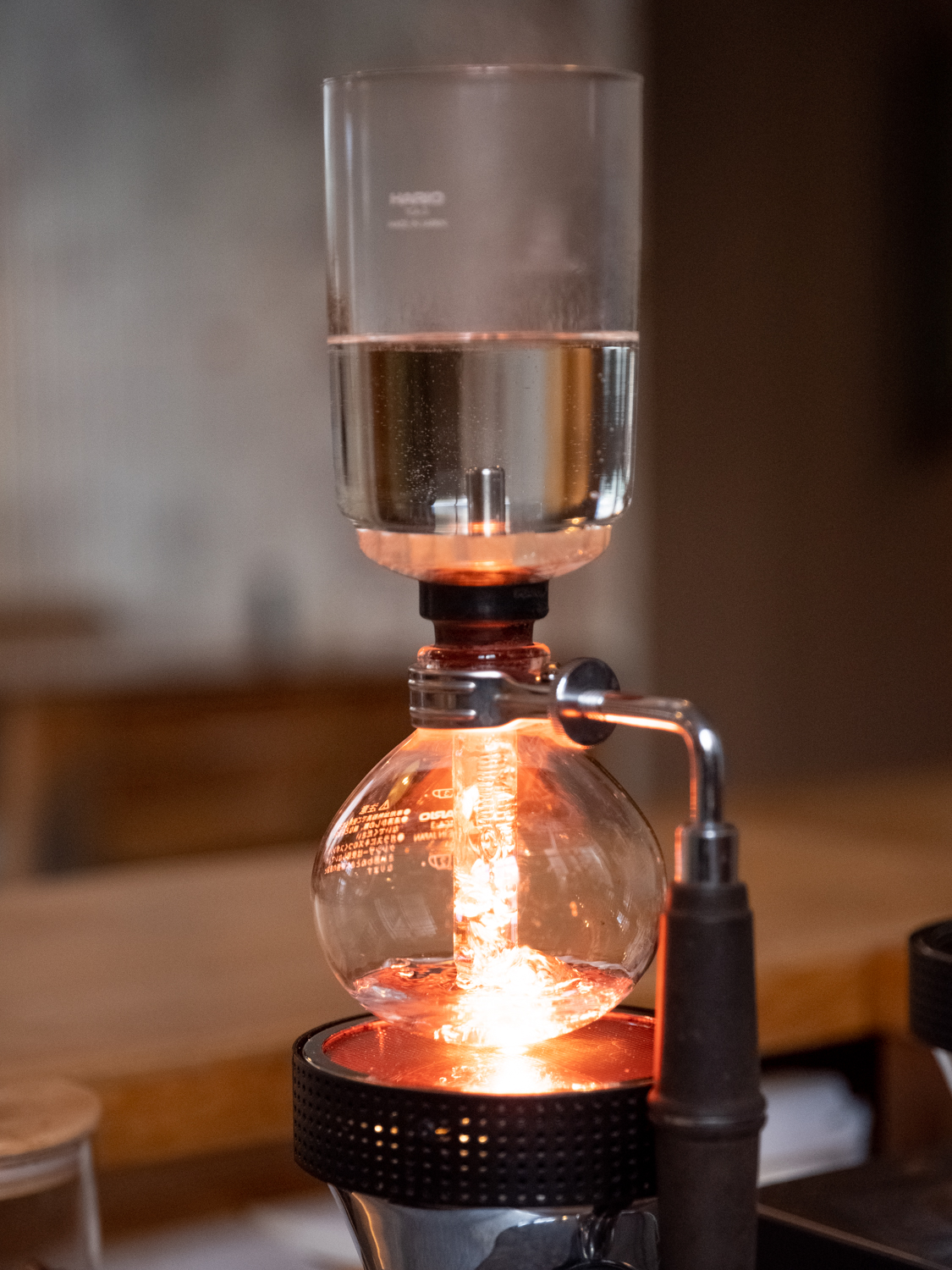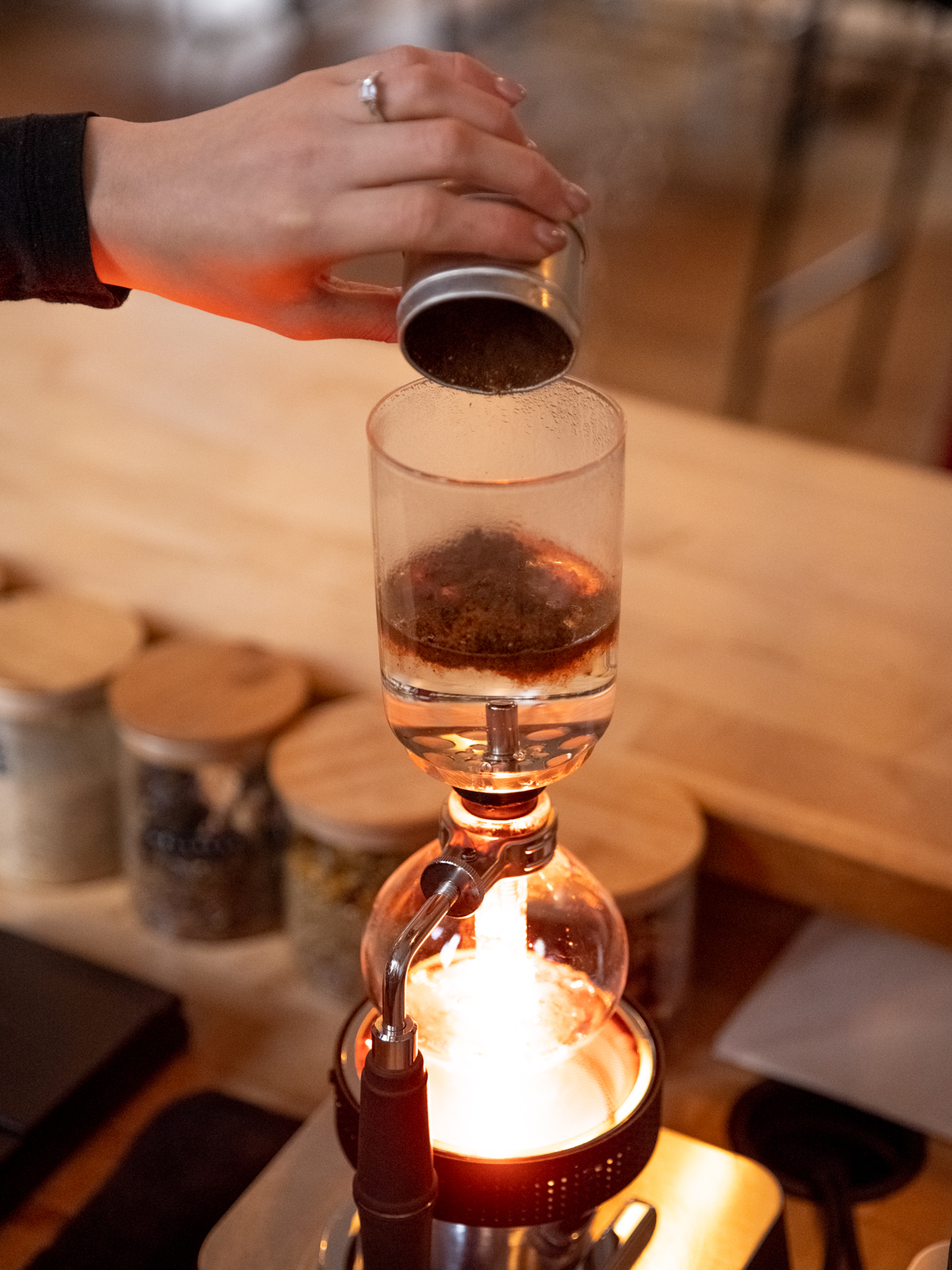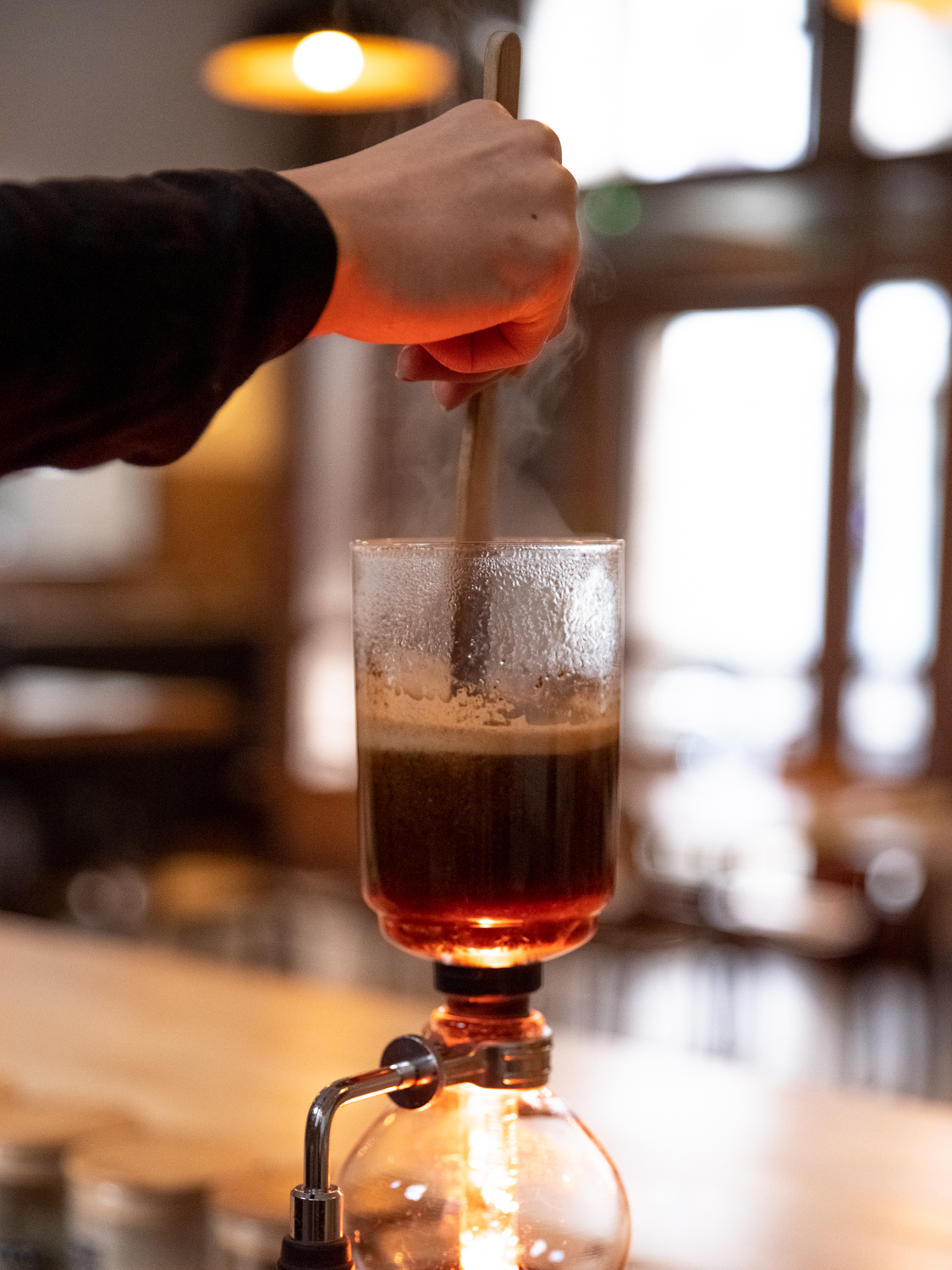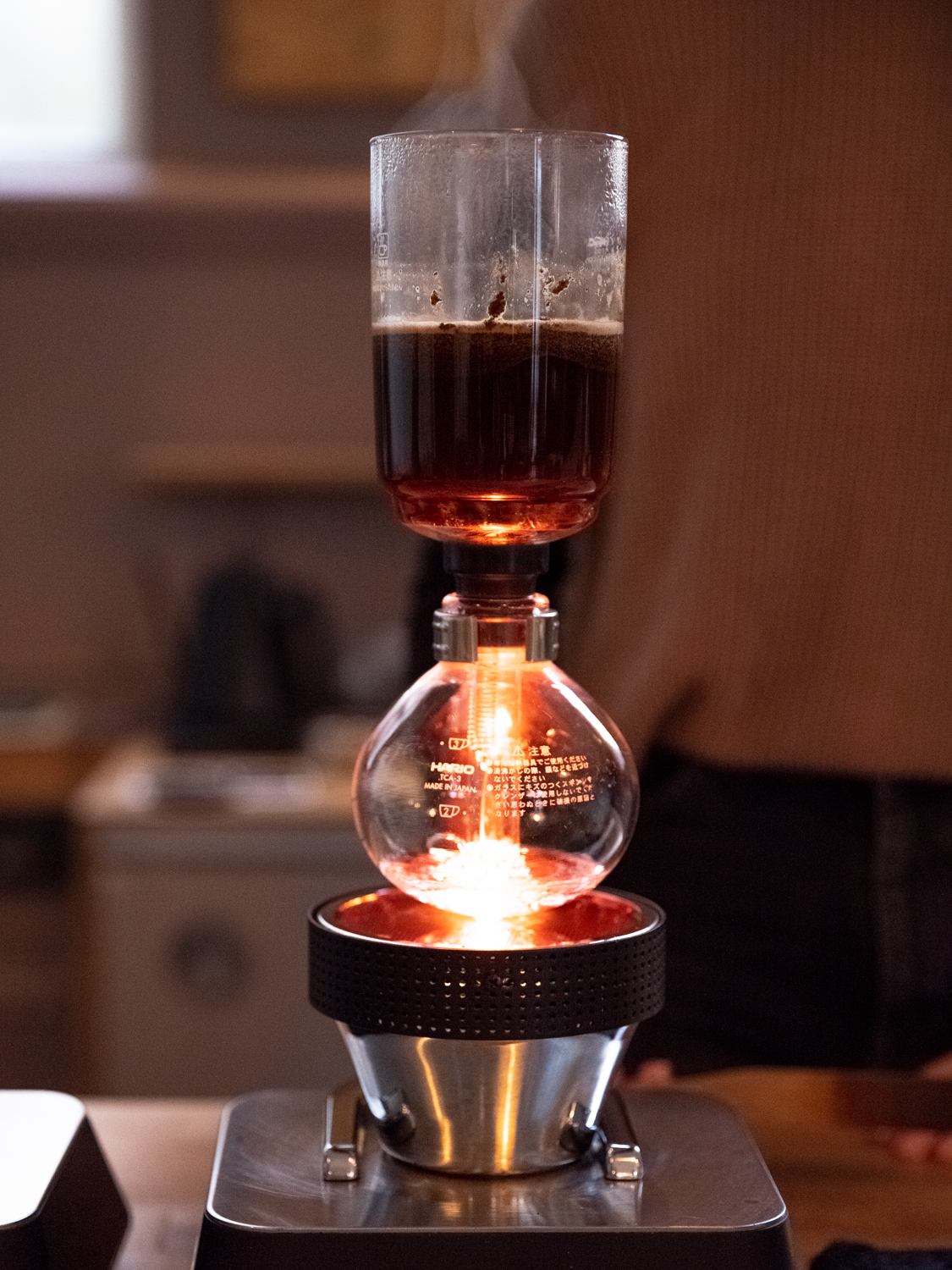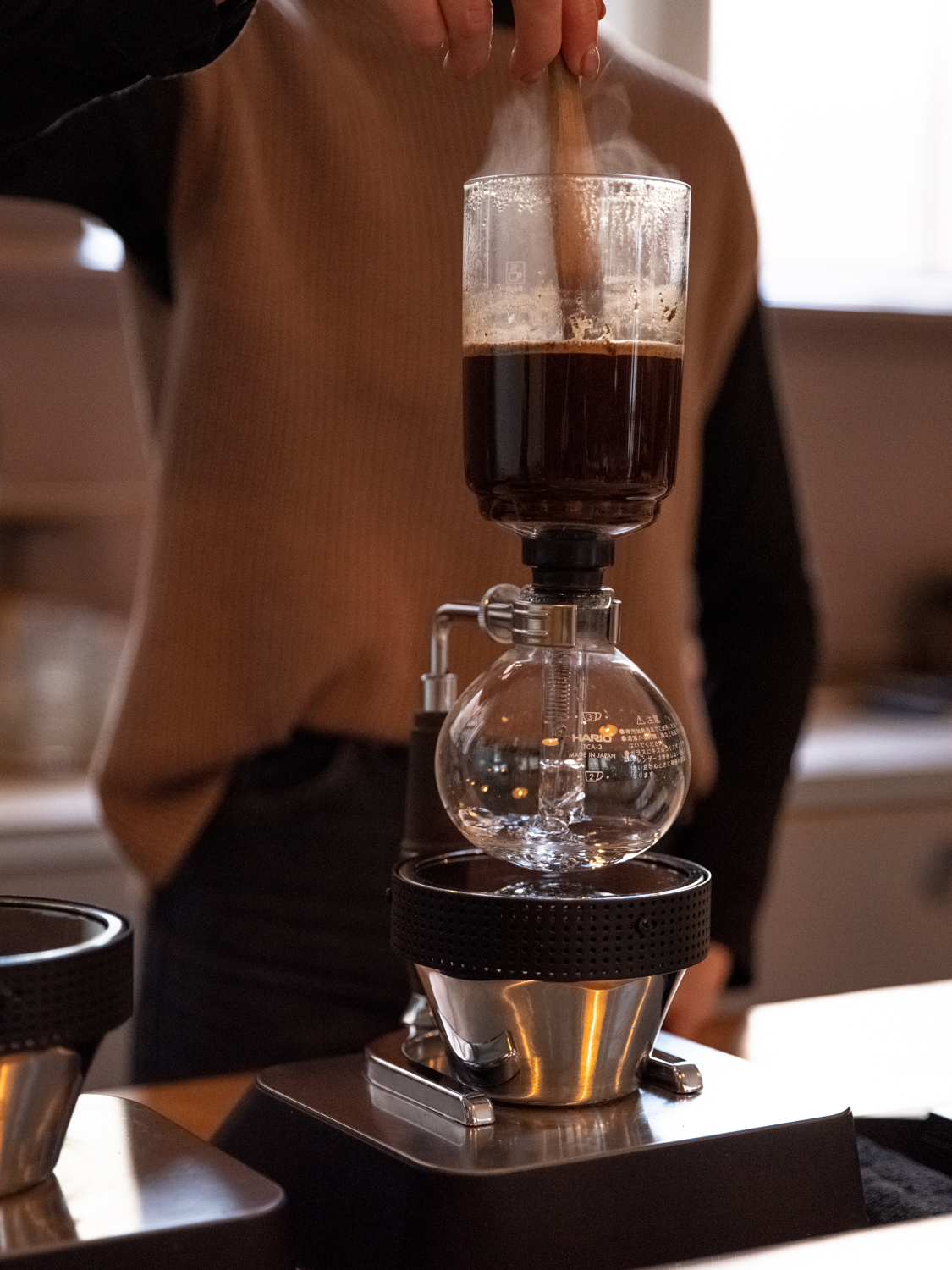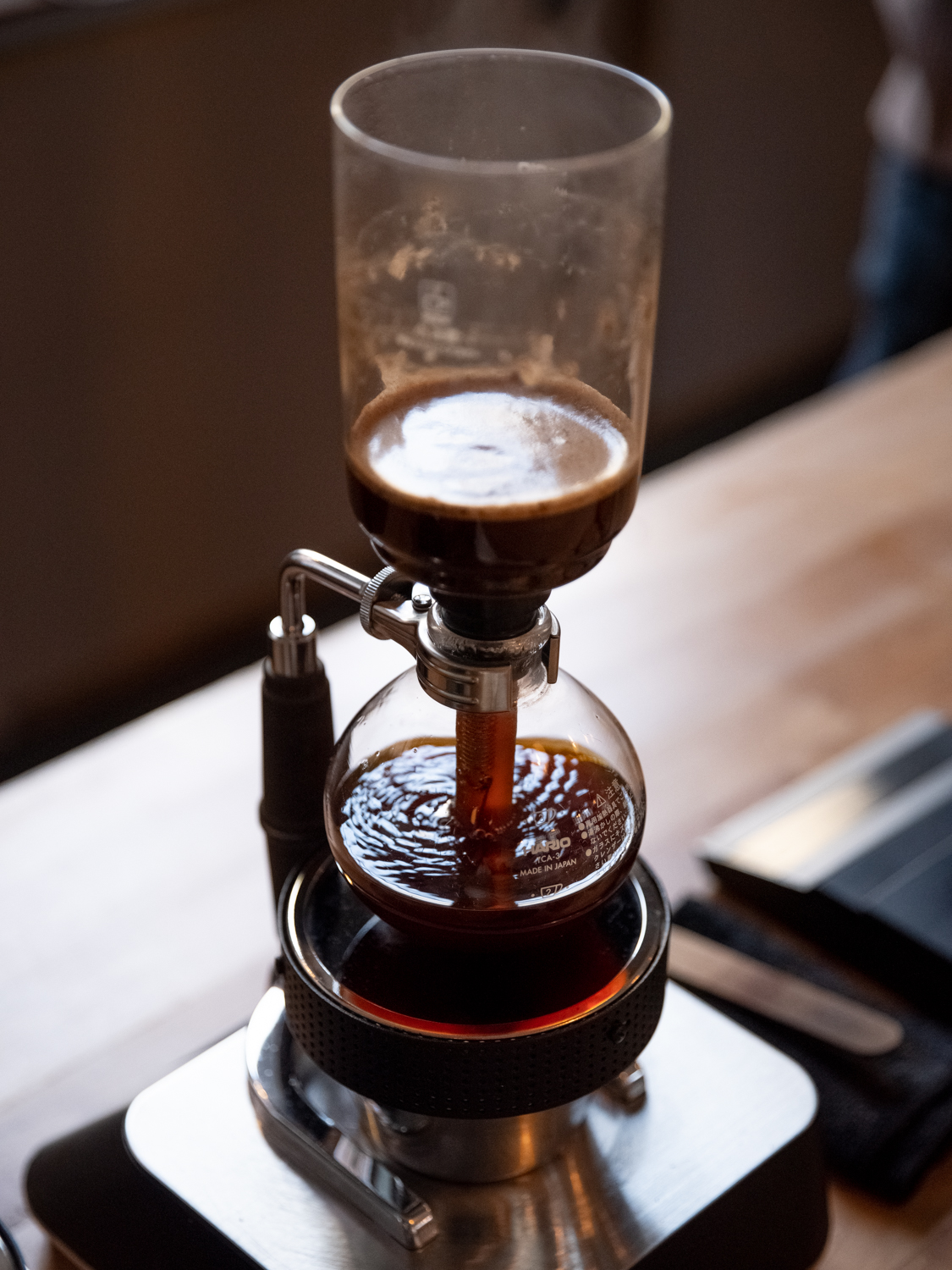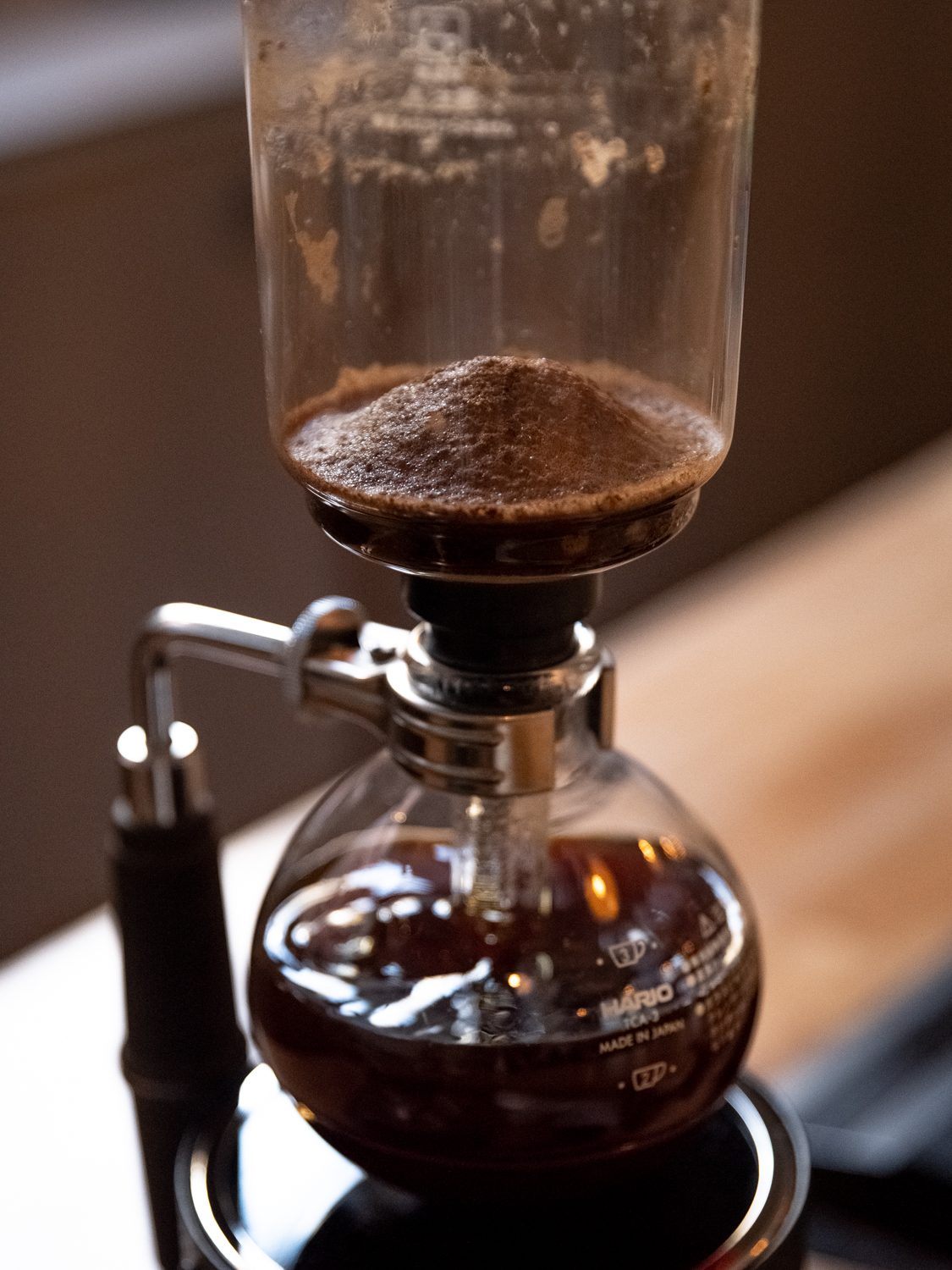TOP TIPS FOR THE FELLOW SYPHONIST
Syphon Coffee
Syphon coffee is one of the most theatrical brew methods out there and though it might look complicated, once mastered, it can deliver great results with little effort. Invented by a German science teacher in the 1820s, popularity of syphon coffee grew to such an extent that by the 1920s it was the most widely used piece of coffee kit in America. It was surpassed with the invention of the electric filter machines and then instant coffee by the 1950s but in recent years it has seen a resurgence with the third wave coffee boom.
Since opening our second cafe ‘The Hall’ back in 2012, syphon coffee has been our method of choice for brewing filter coffees, roasted just next door at the roastery. In a café setting, with the right set up, brewing with syphon benefits from being freshly ground and brewed to order with replicable recipes that allow baristas to carry out other tasks while the coffee is being brewed. Here a few of our tops tips from the things we have learnt over the years.
Syphon coffee makers feature an upper and lower glass chamber with a paper or cloth filter dividing the two. Boiling water is added to the lower chamber and placed over a heat source. Once the top chamber is sealed in place, a vacuum is created, pushing the water up into the top chamber. Ground coffee is then added and after the brew time has elapsed the heat source is turned off and the brewed coffee falls back into the lower chamber, filtered as it makes its way down.
Syphon coffee brewing is known as a full immersion brew method. This means that the same amount of water is in contact with the coffee grounds for almost the entire brew time. This differs from most filter methods, known as percolation, where water passes through the coffee grounds. As an immersion method it bears some similarities to cafetiere coffee but differs in that coffee is filtered with a paper or cloth filter. Filtered from the bottom, it also gives clearer, less silty texture as fines and oils remain at the top during the brewing process.
As always, achieving a good extraction means playing around with some variables until you get something that tastes spot on. Here are some the things to consider when it comes to dose, brew weight, grind, time, turbulence and temperature.
For most filter strength coffee we would recommend using a brew ratio of 50-60g per litre but for syphon coffee we go a little bit higher. This creates a slightly stronger brew in the top chamber that is diluted by a small amount of water that remains in the bottom chamber until the brewed coffee falls back down. Using 300ml to brew with we use a dose of 20g, giving us a ratio of 1:15. If you wanted to achieve the same results with the smaller brew weight stick to this ratio eg 18g dose – 270g brew weight.
Grinding for Syphon Coffee
Like with any brew method, grinding finer will increase extraction and grinding coarser will decrease extraction. If your coffee is tasting bitter it is probably over extracted so try grinding a bit finer. If it is tasting sour it is probably under extracted so try grinding coarser. We recommend using a grind slightly finer than table salt, or what you would normally use for a 300ml pour over, brewed for 2 minutes. This generally gives good body and flavour clarity although a coarser grind with a slightly longer brew time will also work.
Unlike pour-over or filter machine coffee, regulating time is easier when brewing with syphon. Instead of adjusting water flow or grind size to hit a desired brew time, syphon coffee more or less steeps for as long as you want it to. We find that we get better results from a shorter brew time. Experiments with longer brew times had a tendency to increase the chances of bubbling as the temperature slowly increased. These bubbles create turbulence which in turn create an uneven extraction by breaking the coffee crust on one side. Once coffee is added in the top chamber we brew for 1:30 before turning off the heat for a 30 second draw down.
When brewing syphon coffee, maintaining the right brew temperature is crucial. As water in the lower chamber begins to heat up, a small chain attached to the filter helps creates friction for bubbles in the lower chamber to form. If the water is bubbling too slowly we know that, once sealed, there is a chance that grounds added in the top chamber will decrease the brewing temperature and water will fall back down. If bubbling too vigorously, we will get turbulence in the top chamber during brewing resulting in an uneven extraction. Once water has risen temperature can be checked with a thermometer until it reaches above 94 degrees. If too hot and you’re getting a lot of turbulence a small stir can help reduce temperature before adding grounds.
Although there’s a bit of temperature surfing to do here, we find that the following works well.
- Apply gas or halogen heat on full power to boiling water in the lower chamber.
- Once water starts to rise, reduce heat ready for brewing as low as possible without it dropping.
Once coffee has been added, give it a vigorous stir backwards and forwards and side to side. The trick here is to get all the grounds saturated quickly. If you stir for too long you will end up increasing the extraction. If too short and not vigorous enough some pockets of dry grounds will remain in the crust. These dry pockets will not only extract less than the rest of the coffee but will also create channels for any bubbles to break the crust. Once stirred we are looking for a crust with a clean, unbroken line.
After 1:30 has elapsed turn off the heat and give a gentle stir round, 2-3 times. This last phase is called the draw down. By stirring gently a whirlpool is created to pull grounds in from the side and create an even extraction in this final stage. Once all the coffee has filtered down, the spent grounds should form a dome on top of the filter. Stir too strongly and the dome will be too steep resulting in some grounds making their way between the filter and the glass, into the brewed liquid.
Whether paper or cloth, when putting the filter in place, make sure it is in the centre of the upper chamber. This can be nudged in place with a spoon or syphon paddle. If off centre, this can increase bubbles and turbulence appearing up on side and creating an uneven extraction.
Make sure the upper chamber is vertical once sealed. If this is sealed at an angle this can add to turbulence from bubbles on one side.
Brew the right amount for your syphon size. Brewing too little will mean that the crust formed in the upper chamber will be too thin. This can be broken easier by bubbles, adding to turbulence.
Dose – 20g
Grind – 3 – Malkonig EK43 (just finer than table salt)
Time – 2 minutes
Brew Weight – 300ml
Agitate grounds at the beginning and stir twice at the end.
Temperature - 94 degrees
